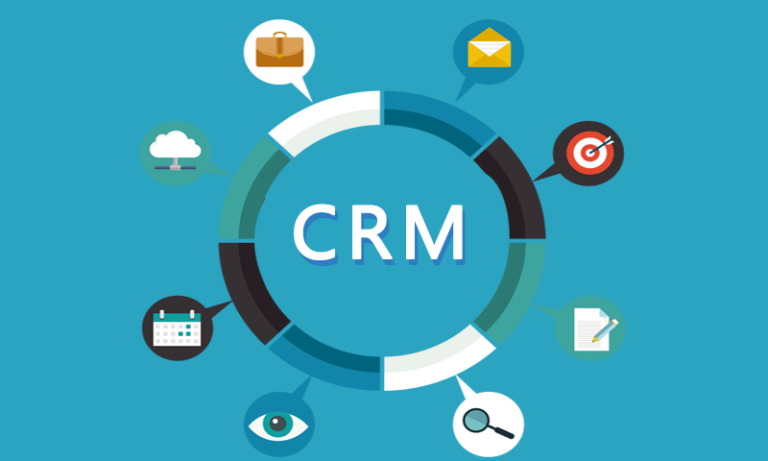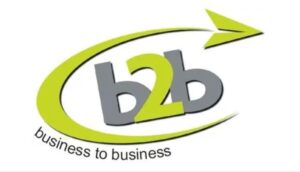What is CRM? How to fully understand the CRM system?
- iclick
- 2023-05-11
1: CRM stands for Customer Relationship Management. It generally refers to a method of managing customer resources or the systems developed based on this method. Customer Relationship Management (CRM) is an interactive platform used to manage customer relationships in companies that have both new and existing customers. It leverages data analysis of relevant business transactions to improve business relationships with customers, with a particular focus on customer retention and ultimately driving sales growth. The derivative product of CRM thinking is the CRM system, which collects data from various communication channels, including company websites, phone calls and emails with customers, live chats, marketing materials, recent social media interactions, and various offline promotions. Through the CRM approach and CRM system, businesses can gain a deeper understanding of their target audience and how to better meet their needs. With the development of IT technology and the internet, CRM system tools continue to evolve. They are primarily classified into two types based on payment and deployment methods: subscription-based (also known as Software-as-a-Service or SaaS) and perpetual license. Subscription-based CRM systems operate on a yearly payment model and are deployed in the cloud, while perpetual license CRM systems require a one-time payment for lifelong usage and are deployed locally, often requiring dedicated servers. Today, CRM software has evolved from a simple customer management system into a powerful comprehensive technological tool that allows you to manage sales, marketing, finance, suppliers, and other types of operational data. Its ultimate goal is to attract new customers, retain existing customers, and convert current customers into loyal customers, thereby generating more revenue for the business.

2: CRM and SCRM differ in their focus and approach to managing customer relationships.
CRM is a product of the telephone era, while SCRM is a product of the social media era. This is the fundamental difference.
When the key variables of communication media undergo a qualitative change, many things change along with it. For example, the following aspects are worth noting:
The form of leads has changed: With the invention of QR codes, phone numbers are no longer the only choice for lead generation. Phone numbers point to a series of digits, while QR codes point to friends.
Touchpoints and marketing methods have also undergone reshaping: Social networks (and social media) themselves imply a large amount of content and connections extending in various directions. Moments shared among friends, chat scenes, social media feeds, etc., are all derived marketing scenarios, providing a basis for the accumulation of user data.
New forms of leads combined with diversified contacts have changed customer acquisition efficiency: In short, the connect rate of phone calls has almost reached a ceiling, and lead forms based on friend relationships are breaking this deadlock.
CRM cannot establish a private domain, while the main goal of SCRM is to help businesses build a private domain.
If a tool, apart from theoretically integrating with WeChat, does not have much difference in other modules compared to traditional CRM, it can also call itself SCRM, but it would be more like old wine in a new bottle. Theoretically, it may claim to add customers on WeChat, but in practical work, it cannot be achieved. If it cannot be added, then establishing a private domain becomes a facade, and the slogans of inheriting clients and retaining them are contradictory.
The main issue lies in leads. Due to a strong dependency on phone numbers, the lead processing of these so-called private domain tools mostly follows the process of “admin distributing phone number leads – salesperson repeatedly making sales calls – telling customers that I will add you on WeChat”. The steps are cumbersome from start to finish. In the end, few customers actually join the corporate WeChat, or many salespeople are simply unwilling to add customers on WeChat.
Only by truly reconstructing the process and directly addressing the connectivity issues in each customer acquisition scenario can we live up to the word “social” and build a private domain. On the other hand, most CRM information is manually entered by salespeople. Due to considerations of customer information protection, the information is often deliberately desensitized. SCRM makes it possible to construct private domain data. SCRM relies on highly mature social networks where people consume and disseminate a large amount of information every day.
For customers who have entered our private domain, compliant collection, analysis, and application of data can help us understand their intentions more accurately, build a classified and layered private domain operating system, and provide targeted services to customers.
3: CRM focuses on division of labor, while SCRM emphasizes collaboration.
Anyone who has been in contact with traditional CRM partners is familiar with the concepts of the “public sea” and the “private sea.” Between these two seas, customers are distributed, converted, and reclaimed as leads. The decisive factor behind this is that the lead repository of traditional CRM heavily relies on phone numbers. Once a lead is assigned to a specific salesperson, they establish a one-on-one exclusive relationship with the customer.
At the same time, managers fulfill their role in division of labor. Next comes the common customer protection behavior by salespeople. Collaboration is secondary in an overall environment lacking trust. (In traditional CRM systems, a customer’s information cannot be followed up by multiple salespeople—duplication—under the strange notion of exclusive one-on-one relationships, where the customer is unaware or remains unaware even if the relationship is transferred one day.) In SCRM, QR codes have become the primary carrier of leads. Once a customer engages with a company, it automatically establishes a one-on-one relationship with the specific business person within the company.
Furthermore, this relationship cannot be unilaterally changed by the company, but if the experience does not meet expectations, it is the customer who actively terminates the relationship. This also means that companies need to maintain appropriate strategies during the communication process to avoid customer displeasure. Moreover, assuming two salespeople consecutively add the same customer, this relationship can only be stacked in the system. There is no concept of “previous salesperson terminating the friendship and transferring the relationship,” allowing for natural occurrence of one-to-many or even many-to-many relationships between the parties involved in the transaction.
In other words, on the one hand, relationships are multilateral, and on the other hand, customer data can be and should be systematically accumulated in an orderly manner with each interaction (as mentioned in the second point above). This means that collaboration has become an irresistible choice under the premise of relationship and data sharing—because the efforts of every salesperson who establishes a relationship with the customer are transparent within the system.
To be frank, the previous salesperson’s follow-up and the system’s records can also provide strategic references for the decisions of the next follower. Information is horizontal, and collaboration becomes a more natural choice. In contrast, in traditional customer relationship management, the system overlooks the previous sales efforts in tracking the customer, and only those who happen to close the deal reap the benefits.



